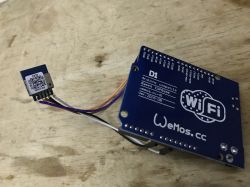FAQ
TL;DR: For mixed 230V/12V control, skip costly PLCs — “2000zł for a Siemens controller” — and use modular Wi‑Fi/PWM instead. This FAQ guides DIYers to combine wall switches, LED controllers, and smart plugs under one remote/app. [Elektroda, Matesz 063, #18277636]
Why it matters: It shows how to unify 230V switching and 12V dimming without overpaying or overcomplicating the setup.
Quick Facts
- IR is line‑of‑sight; use Wi‑Fi or Bluetooth when walls block signals. [Elektroda, Matesz 063, #18261382]
- 12V LED strips dim via PWM; controllers exist for single‑color, RGB, RGBW, and RGBCCT. [Elektroda, xury, post #18317820]
- 230V lighting: on/off is simple; brightness control is more complex than LED PWM. [Elektroda, Matesz 063, #18261702]
- Cost note: PLCs can be ≈2000 zł; microcontroller‑based options are cheaper. [Elektroda, Matesz 063, #18277636]
- App‑based route: FIBARO with the FGRGBW module supports LED strips via smartphone/tablet. [Elektroda, Kuniarz, post #18277482]
What’s the best way to control 230V lights, 12V LED strips, and two sockets together?
Use ESP8266‑based gear on Wi‑Fi. Fit Sonoff T‑series or Mini for 230V lights. Use a Sonoff S20 smart plug for sockets. Add Magic Home or Arilux LED controllers for strips. Optionally flash Tasmota to unify control. [Elektroda, xury, post #18317820]
Can I use one handheld remote instead of a phone?
Yes, choose devices with RF receivers. Some Sonoff T‑series accept 433 MHz remotes. For strips, stay within one ecosystem, like MiLight. You can also build an RF‑Link bridge on Arduino to translate remote codes. [Elektroda, xury, post #18317820]
How do I dim 12V LED strips (white and RGBW)?
Use a PWM controller to regulate brightness. As one expert notes, “A simple PWM will suffice.” This keeps dimming smooth and efficient. [Elektroda, Matesz 063, #18261702]
Can I place 230V smart switches before the LED power supplies to control on/off?
Yes. The LEDs may switch a little later due to the power supply. For dimming, still add a 12V PWM driver between the supply and strips. Separate remotes are possible if needed. [Elektroda, Matesz 063, #18262659]
Is dimming 230V lights harder than dimming 12V LED strips?
Yes. On/off at 230V is straightforward. Brightness control at 230V is more involved than simple 12V PWM dimming. Plan for on/off only if you want to keep it simple. [Elektroda, Matesz 063, #18261702]
Is there an off‑the‑shelf, app‑based system that covers this?
Yes. The FIBARO system supports smartphone or tablet control. It also supports LED strips via the FGRGBW module for integrated control. [Elektroda, Kuniarz, post #18277482]
I’d prefer DIY hardware. What parts do I need?
Use an Arduino Nano with an IR receiver and matching remote. Add relays for 230V switching and transistors for LEDs. Include wires, resistors, and tools. You must write the microcontroller program yourself. [Elektroda, Matesz 063, #18261825]
Which Sonoff models should I use for lights and sockets?
Replace wall switches with Sonoff T0/T1/T2/T4. Some include 433 MHz receivers, and T4 can work without neutral. For retrofit boxes, use Sonoff Mini or Basic. For sockets, use a Sonoff S20. [Elektroda, xury, post #18317820]
What LED controllers should I pick for white and RGBW strips?
Use Magic Home or Arilux AL‑LC01‑type controllers. Models provide single‑channel PWM for white and multi‑channel for RGB, RGBW, or RGBCCT. Match the controller to your strip type. [Elektroda, xury, post #18317820]
Will infrared remotes work through walls?
No. IR needs line‑of‑sight and does not pass through walls. Choose Bluetooth or Wi‑Fi if you need room‑to‑room control without repeaters. [Elektroda, Matesz 063, #18261382]
How can I unify everything under one app or firmware?
Select ESP8266‑based devices and flash Tasmota, ESPEasy, or Espurna. These firmwares standardize control across LEDs, switches, and sockets in one interface. [Elektroda, xury, post #18317820]
Quick 3‑step setup to get started
- Install Sonoff T‑series or Mini on 230V circuits and pair them to Wi‑Fi.
- Add a Magic Home or Arilux PWM controller to each 12V LED strip.
- Plug loads into a Sonoff S20 and manage everything via the app or Tasmota. [Elektroda, xury, post #18317820]
Any pitfalls when switching LED power supplies with 230V relays?
Expect slight on/off delays from the power supply. Dimming still requires a 12V PWM driver placed between the supply and LEDs. Separate remotes can be used if ecosystems differ. [Elektroda, Matesz 063, #18262659]
Did this approach work for the original poster?
Yes. The author confirmed success, stating, “Plugged in, everything works.” That validates the practical path outlined above. [Elektroda, 169kondi, post #18433514]





